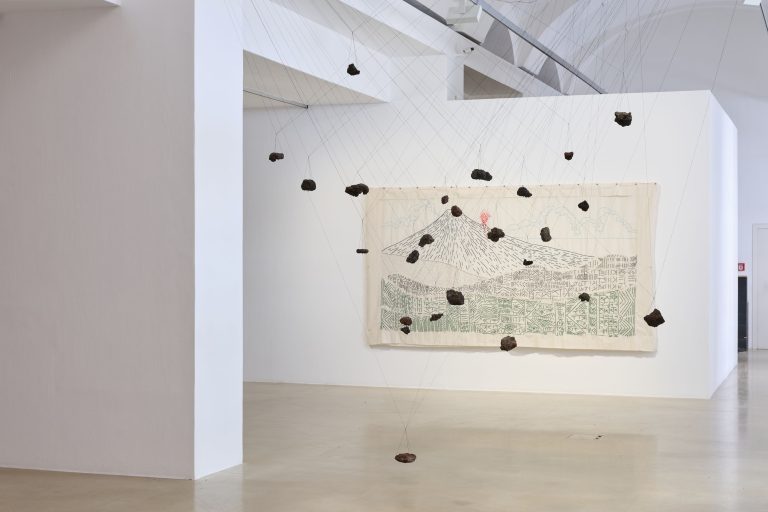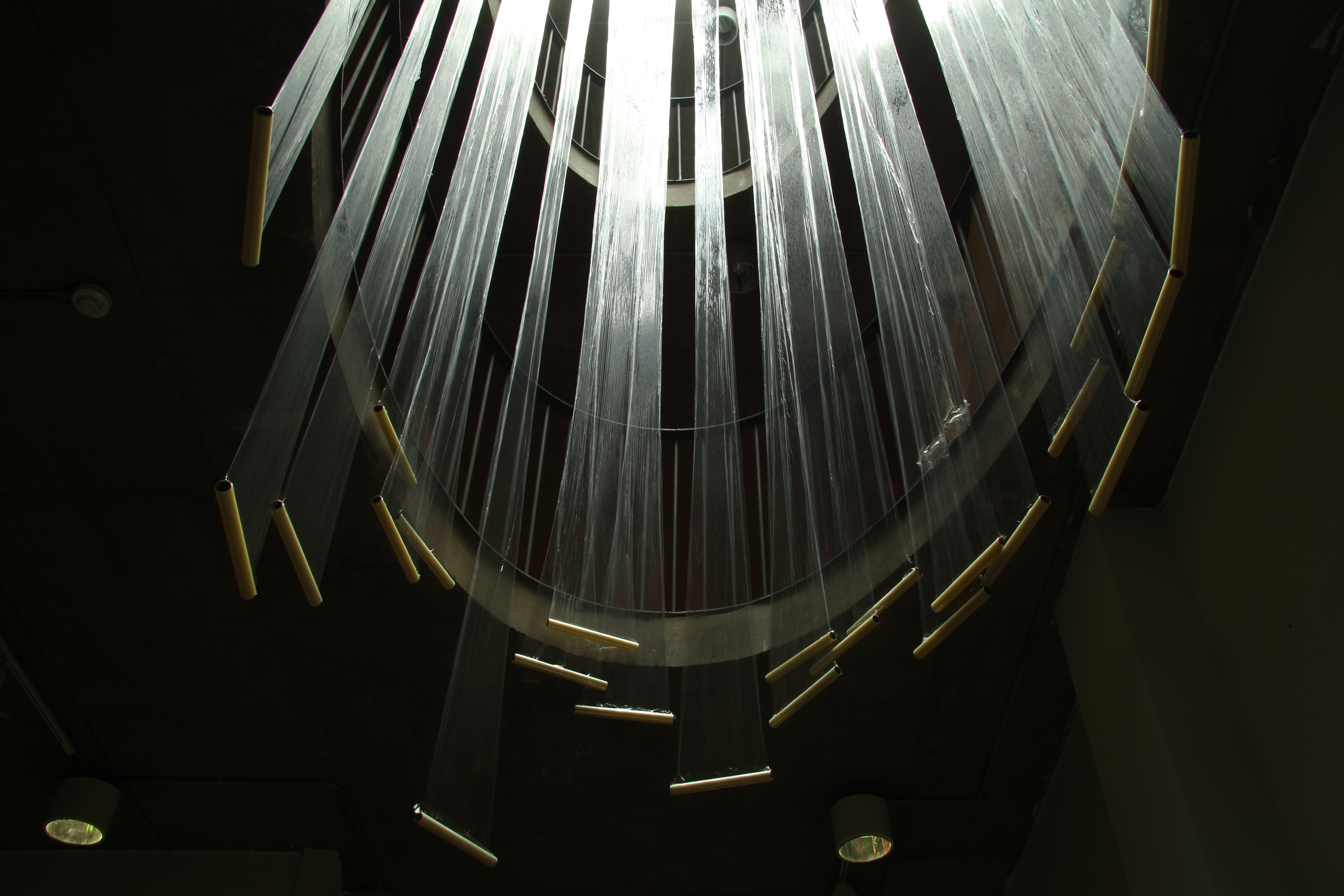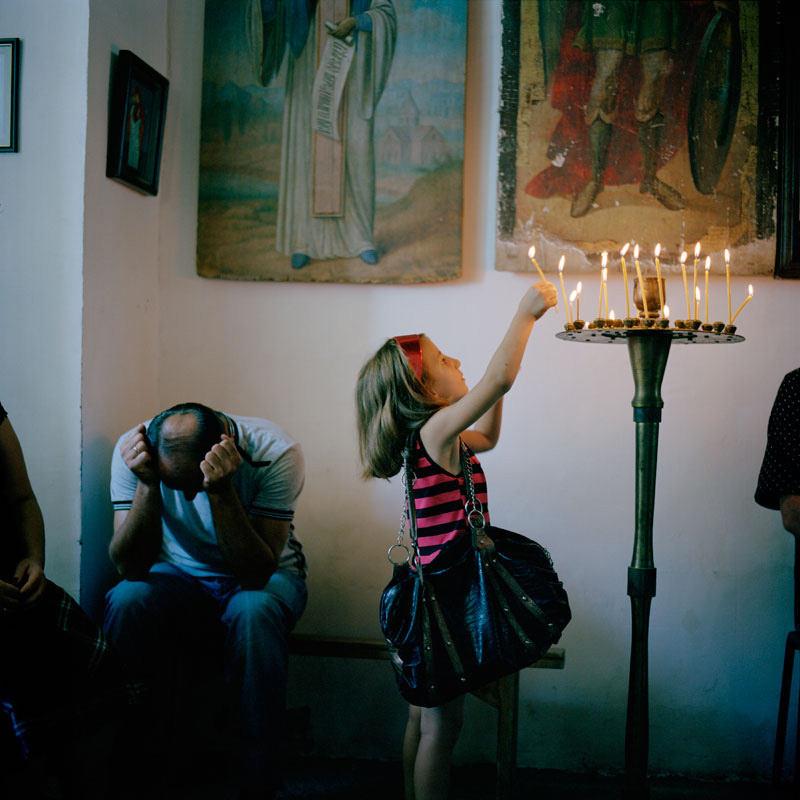This spring Margaret O’Brien was awarded the use of a studio in Helsinki as part of the HIAP International Artist-in-Residence Programme (HIAP). The high profile residency, which is partnered with Temple Bar Gallery & Studios, offers recipients valued time and space to develop creative projects in studios situated close to the centre of Finland’s capital city – either in the historical island fortress of Suomenlinna, a UNESCO World Heritage Site, or the massive Cable Factory, Finland’s largest cultural complex. As one who has been intrigued by the interplay of randomness and repetition in her sculpture and installations, I wanted to know more about what O’Brien was doing and her reasons for wanting to work in Helsinki. The following article recounts aspects of the conversations we had in her studio last June.
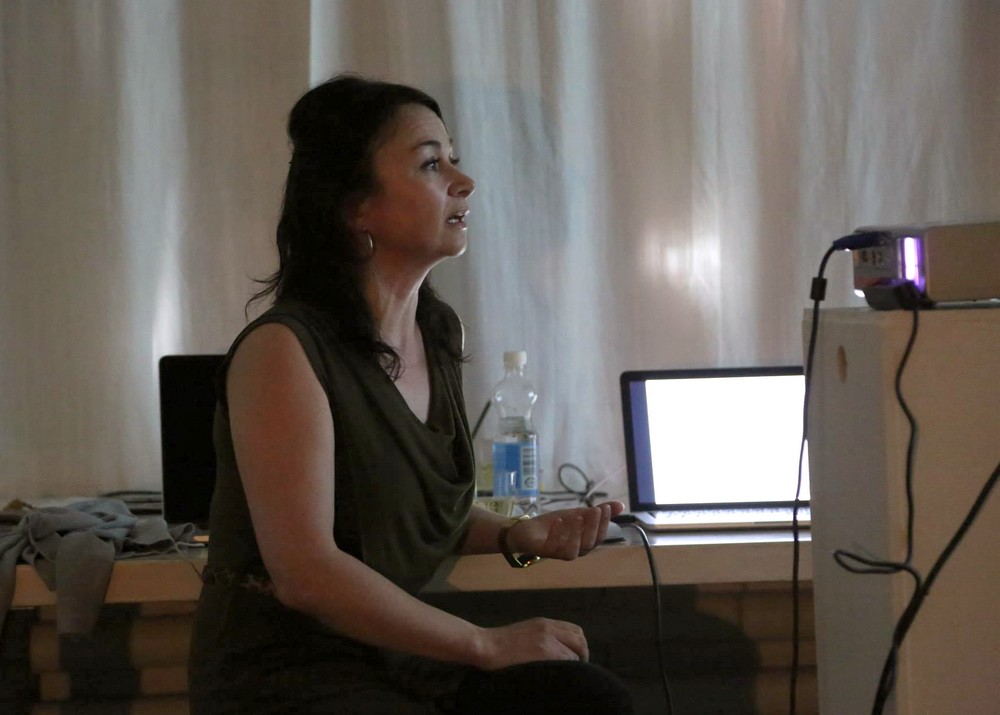
Margaret O’Brien, HIAP Open Studio
Photo:© Tuomas Laasanen / HIAP
Taking the C-entrance to the Cable Factory’s fourth floor soon brought me to the quiet stretch of hallway in which HIAP’s studios are nestled. The space assigned to Margaret O’Brien is sparely furnished, airy, and bright. A bank of large windows facing the gap between the U-shaped building’s arms ensures the space is filled by natural light. The unit, which is high ceilinged and self-contained, simultaneously conveys intimacy and openness. The impression is of an inviting environment; one that is functional and well-suited to contemplation and the development of new work.
When asked about the residency’s significance, O’Brien notes that it offers a very welcome period of time during which she can concentrate on developing a new project. As she is currently studying towards a PhD at Trinity College Dublin – her research deals with repetition as critical practice in contemporary art – and teaching at two colleges, the luxury of spending ten hours per day in the studio has become a rare commodity. Irish educational institutions currently have little or no money to support professional development and there are also practical considerations stemming from the nature of her work. Her large-scale installations tend to evolve slowly and are physically and financially demanding to realise. Moreover, she works primarily by herself. She says the length of the residency, which in this case only lasts for six weeks, makes it difficult to complete a project, but it is giving her that very important time to explore ideas, test materials, and consider where the new artwork could be sited and how it will be configured.
She emphasises that she is not a maker of objects. Her interest is in the psychological relationship we have to the space around us. After spending a decade making two-dimensional images, she reached the point where she could do that no longer. Her ideas had shifted and, to maintain movement in her art practice, so did her way of working. The studio’s appearance certainly supported these assertions. It, for the most part, was empty. Only a few small items – lengths of wire, electrical connectors, rolls of tape, pliers, screwdrivers, and scissors – were scattered on the floor.
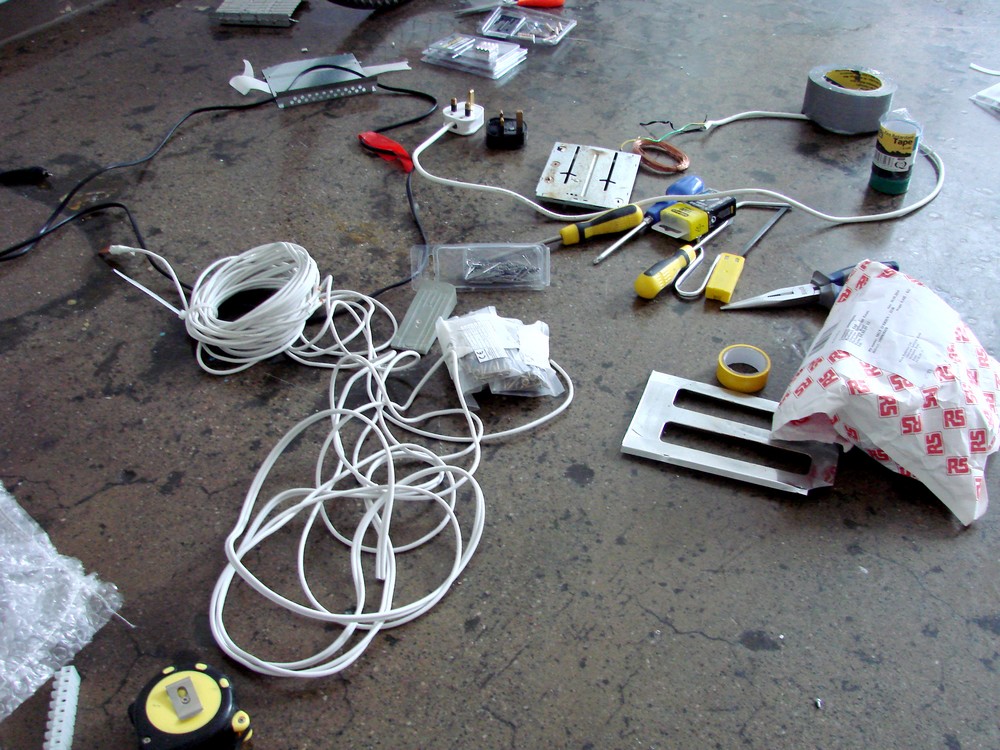
Photo: John Gayer
O’Brien explains that she responds to materials in a very intuitive fashion. She considers them a prompter, that is, they signal the start to a work. Then, when working with the materials – testing them – she tries not to have any preconceived ideas of how the piece might develop. Testing points out possibilities; it presents ideas and opens new avenues through which she can proceed. This means that each project presents its own learning curve. The process is also transformative. As the projects develop, their form and her relationship to them always change.
A variety of commercial products have been used in past projects. They have included large numbers of repaired cups and saucers (The Long Goodbye, 2007) dressmaking pins (I Live in the Cracks in the Walls, 2008), plastic fasteners (The Gate Keeper Project I, 2009 and The Gate Keeper Project II, 2010), and chimney cleaning brushes (The Conversation (Nonknowledge), 2013, and Othering, 2014). These works are memorable for a variety of reasons. Not only does the artist deploy her materials to create unexpected visual textures and patterns, but she also devises installations that operate on a psychological level. In each case the work draws attention to discrepancies embedded within repetitive activity, involves notions of growth or actual movement, and – because of a combination of their spatial attributes, haunting quality and inherent sense of instability – establishes an unsettling relationship with the viewer.
In Helsinki O’Brien was busy testing the possibilities of Nichrome wire, an alloy used in hot-wire cutters, as an armature in ceramic sculptures, and for other purposes. She was very interested in the way it heats up and glows. While speaking more about the creative process and her concerns, she emphasises that she can’t help but be critical about the function of the work.
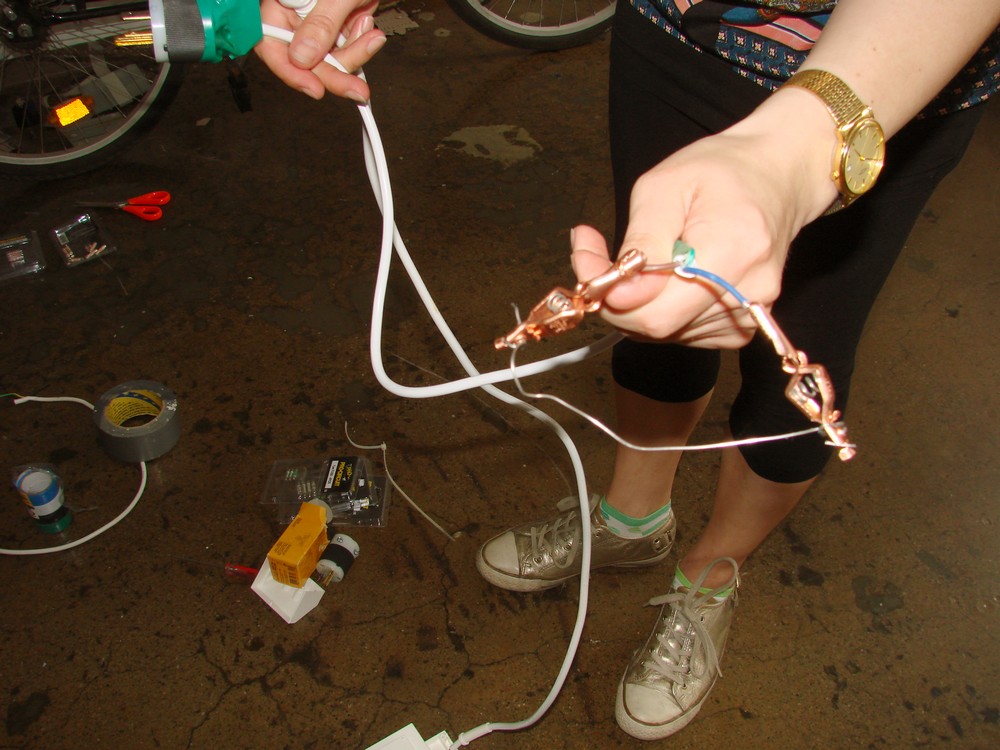
Photo: John Gayer
The work has to be provocative – something that surprises, but not in a gimmicky or shocking kind of way. In this regard where and how the work is sited plays an extremely important role. Having the work evince certain tensions is another thing that interests her. She mentions that this could be accomplished if the work treads the tenuous line between function and malfunction, or creates a disorienting experience.
This reminds me of her work Sea of Unknowing III (2005), which conveys both ideas. In this installation a light in a blackened space flashes on an intermittent basis. Though the brevity of its appearance forestalls normal vision, it produces an after image that is stronger and more persistent than the flash itself, thus creating a disconcerting imbalance. The light not only fails to illuminate the space, its erratic behaviour and the crackling sound it makes promote confusion. At the same time its residual effects also preoccupy the viewer.
O’Brien says the experience raises questions as to the location of the work. Does the art piece reside in the exhibition space, on the retina or in the mind of the viewer? The after image, which lingers after the flash, appears to be its central element. It is certainly stronger – more invasive – than the original image. She adds that her work also concerns itself with the way people engage with patterns of repetition. The viewer exists in the present, but the eye or mind is preoccupied with the after image, which stems from a past event. At the same time, an awareness of the future also develops. The flashing can engender nervous anticipation and curiosity. Some attempt to predict the character or timing of future flashes.[1] Past, present, and future are knotted together here. While each viewer responds to the work in his or her own way, that response does not remain consistent. Various factors influence the mind and that alters our impression of things. They continue to evolve.
The idea of making work that happens in the viewer’s body appeals to O’Brien. After images and instability – she says these are things she would like to incorporate into future work, if they make sense to the project. Another very important consideration involves placing the material components of the work. They cannot be situated just anywhere, but must be connected to the idea of the work in some way, though not necessarily its form. Achieving this presents a unique set of challenges each time. For Helsinki, O’Brien has been interested in the local environment, particularly the archipelago that surrounds the city’s centre. She’s been thinking about Ireland’s island mentality, the psychology of it, and how it has evolved since the 1990s, a time when there was no Internet. Gaining an understanding of how that sense of physical isolation and state of mind operates here also forms part of her research. Despite the unusually cold and wet June weather, she has been making excursions to get a better sense of the local psychology and to find an appropriate location for the project’s realisation.
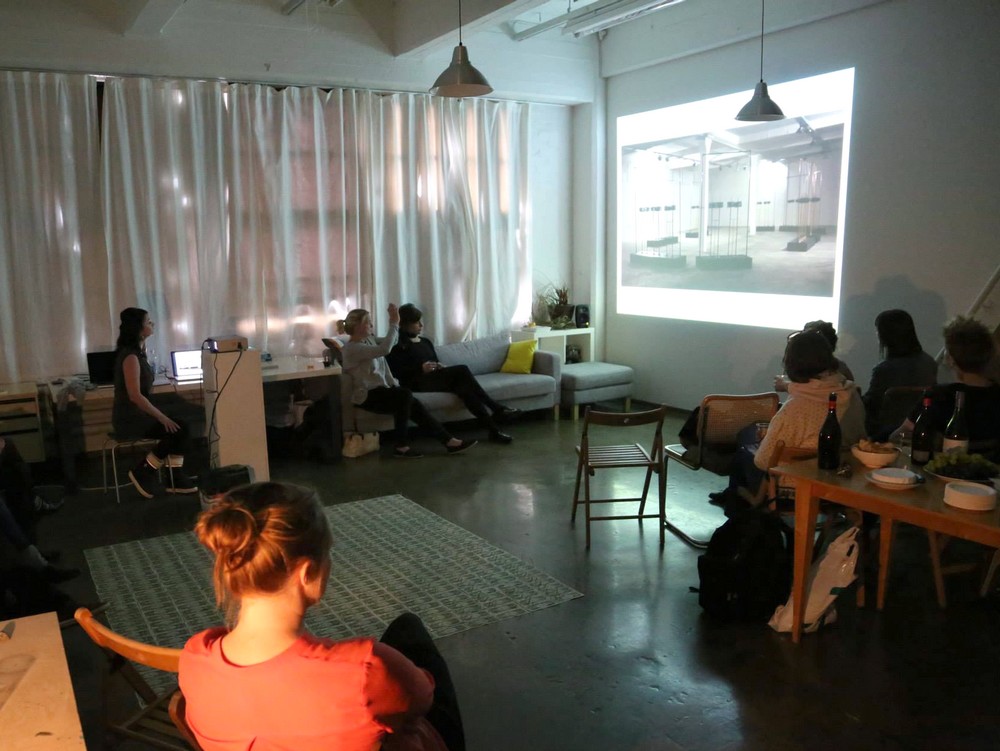
Photo:© Tuomas Laasanen / HIAP
On my final visit the studio holds absolutely no visible physical evidence revealing what direction the project might be taking. O’Brien’s bags are packed and it is her last day in the city. After a visit to Manifesta 10 in St. Petersburg, she will head back to Dublin. She does concede the ideas are at a tender stage in the developmental process and that her presentation in the HIAP Open Studio event, during which she talked about her reasons for being on the residency, the ideas behind the new work and its specificity to Helsinki, went well. Her overall mood is quite positive. She lets me know that the residency has been productive and that the development of the project will continue in Ireland. The plan involves situating the finished work in an outdoor location in Helsinki sometime next year. From the conversations we’ve had I can understand her hesitancy about going into more detail about its possible structure, potential resonances, and the ways it might amend the viewer’s understanding of the materials, his or her perception and/or the local context. I know that the project, as O’Brien currently envisions it, can drastically change. The experience has only intensified my desire to see the completed work.[2]
John Gayer is currently based in Helsinki.
[1] This quality is also present in Othering (2014). Viewers soon understand that the rotating brushes will continue to produce electrical discharges, but the variations in the brushes’ structure and the way the bristles make contact makes it difficult to predict the frequency and intensity of the sparks.
[2] For information on Margaret O’Brien’s work and her HIAP residency please see: http://www.margaretobrien.co.uk/ and http://www.hiap.fi/artist/margaret-obrien.

